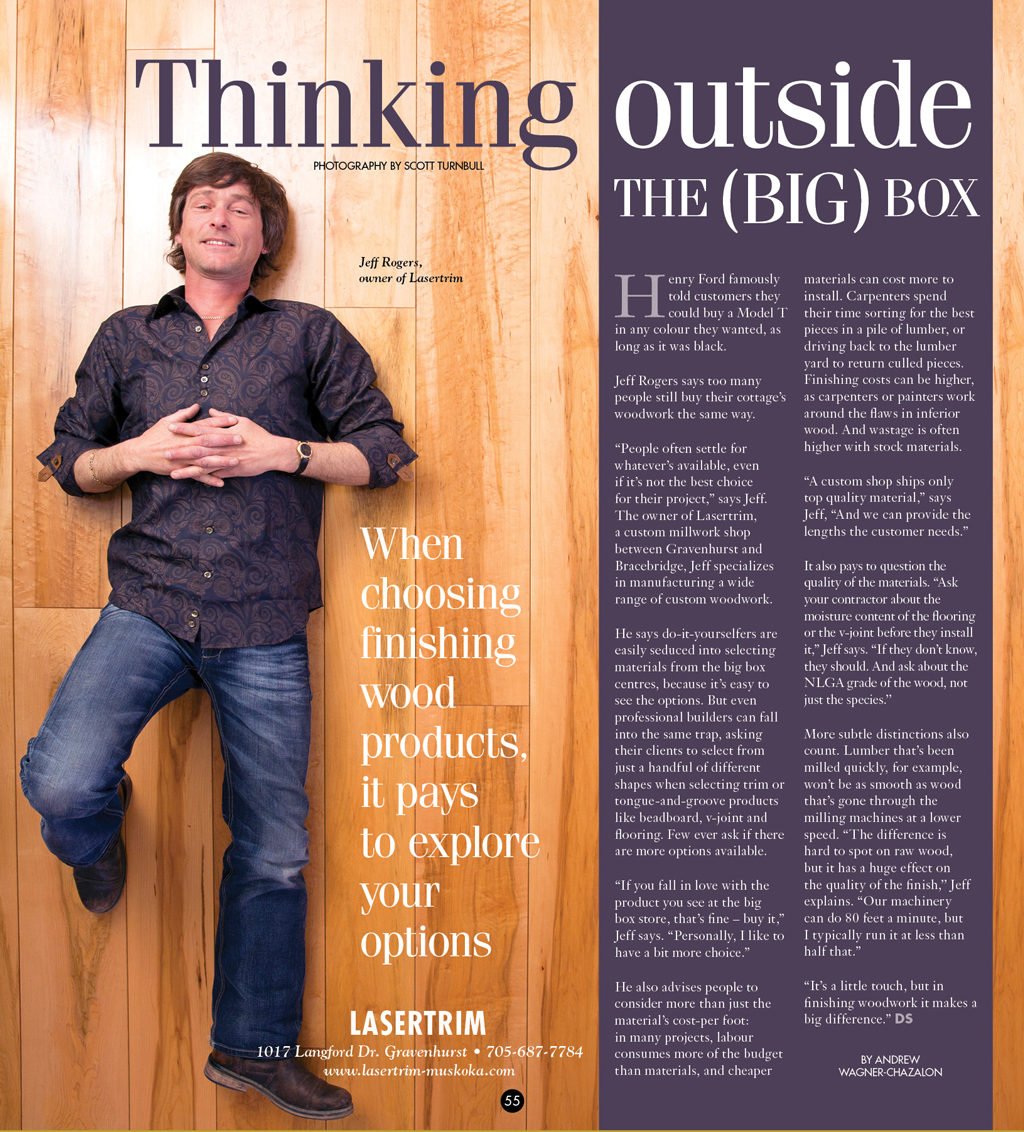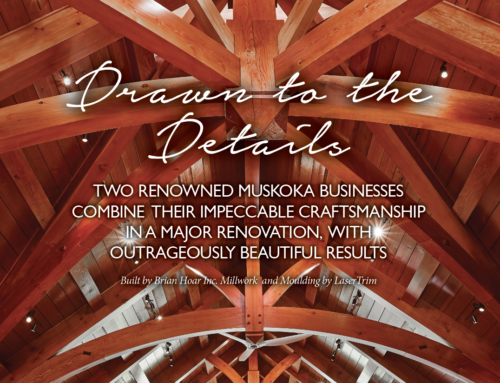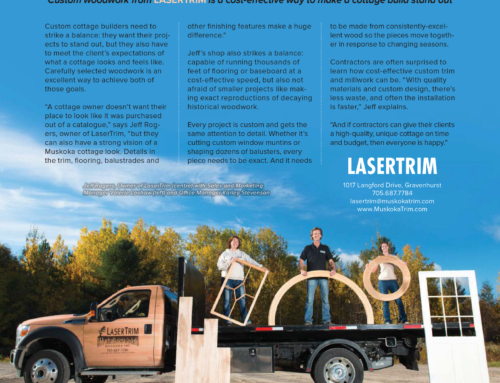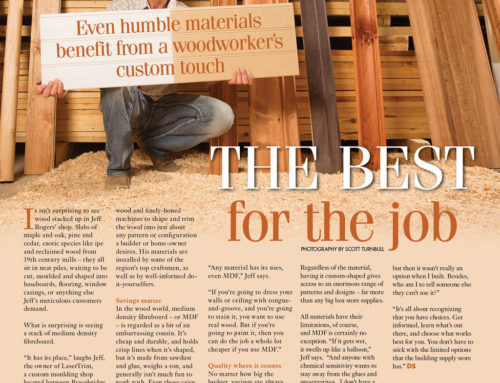When choosing finishingwoodproducts, itpays toexploreyouroptions.
Henry Ford famously told customers they could buy a Model T in any colour they wanted, as long as it was black.
Jeff Rogers says too many people still buy their cottage’s woodwork the same way.
“People often settle for whatever’s available, even if it’s not the best choice for their project,” says Jeff. The owner of Lasertrim, a custom millwork shop between Gravenhurst and Bracebridge, Jeff specializes in manufacturing a wide range of custom woodwork.
He says do-it-yourselfers are easily seduced into selecting materials from the big box centres, because it’s easy to see the options. But even professional builders can fall into the same trap, asking their clients to select from just a handful of different shapes when selecting trim or tongue-and-groove products like beadboard, v-joint and flooring. Few ever ask if there are more options available.
“If you fall in love with the product you see at the big box store, that’s fine – buy it,” Jeff says. “Personally, I like to have a bit more choice.”
He also advises people to consider more than just the material’s cost-per foot: in many projects, labour consumes more of the budget than materials, and cheaper materials can cost more to install. Carpenters spend their time sorting for the best pieces in a pile of lumber, or driving back to the lumber yard to return culled pieces. Finishing costs can be higher, as carpenters or painters work around the flaws in inferior wood. And wastage is often higher with stock materials.
“A custom shop ships only top quality material,” says Jeff, “And we can provide the lengths the customer needs.”
It also pays to question the quality of the materials. “Ask your contractor about the moisture content of the flooring or the v-joint before they install it,” Jeff says. “If they don’t know, they should. And ask about the NLGA grade of the wood, not just the species.”
More subtle distinctions also count. Lumber that’s been milled quickly, for example, won’t be as smooth as wood that’s gone through the milling machines at a lower speed. “The difference is hard to spot on raw wood, but it has a huge effect on the quality of the finish,” Jeff explains. “Our machinery can do 80 feet a minute, but I typically run it at less than half that.”
“It’s a little touch, but in finishing woodwork it makes a big difference.” –DS




